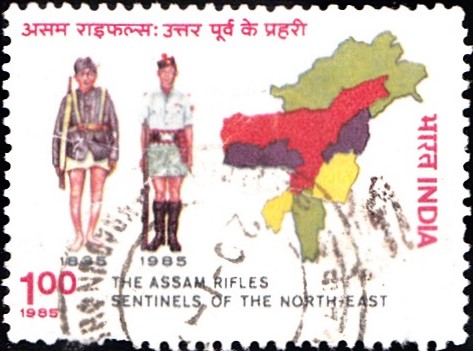
Assam Rifles
A commemorative postage stamp on the 150th Anniversary of the ‘Sentinels of the North East‘ Assam Rifles, oldest paramilitary force of India :
 Issued by India
Issued by India
Issued on Mar 29, 1985
Description of Design : The one rupee stamp designed by Alka Sharma, shows the North-Eastern Region of the country alongwith soldiers of the Assam Rifles in their uniforms of 1835 and 1985. The first day cover shows troops of the Assam Rifles helping in the evacuation of refugees from Burma during the Second World War. The cancellation and first day cover have been designed by Alka Sharma.
Type : Stamp, Postal Used
Colour : Multicolours
Denomination : 100 Paise
Overall size : 3.91 x 2.90 cms.
Printing size : 3.55 x 2.54 cms.
Perforation : 13 x 13
Paper : Unwatermarked P. G. matt coated paper
Number printed : 15,00,000
Number per issue sheet : 35
Printing process : Photogravure
Printed at : India Security Press
About :
- The history of the Assam Rifles dates back to 1835 when the Cachar Levy with about 750 men was raised to counter the tribal raids frequently launched on the plains of Assam. Subsequently, the Force underwent a number of titular changes. It was in 1870 that the various existing elements of the Force were formed into three Assam Military Police battalions, allocated territorially for Naga Hills, Lushai Hills and Lakhimpur. These three battalions of the Assam Rifles Military Police were ultimately converted to the 3rd, 1st and 2nd Battalions of the Assam Rifles respectively. A fourth battalion of the Assam Rifles Military Police was raised in 1915 at Imphal, which today is the 4th Assam Rifles.
- During the First World War the personnel of the four Assam Military Police battalions saw action in France, Egypt, East Africa, Palestine, Mesopotamia, Gallipoli, North Persia and the North West Frontier of India. In recognition of their outstanding performance and excellent services the Government of India redesignated these units in October 1917 as The Assam Rifles.
- The history of the Assam Rifles is entwined with the history of growth and development of the tribal area of erstwhile Assam. Though a para military force, the Assam Rifles has always functioned in close conjunction with the civil administration for over a century. The force extends all forms of aid to the civil population in the development of the region while fulfilling its primary role of watch and ward. Rightfully, therefore, the Force has earned for itself a befitting name of “Friends of the hill people” by its civic work.
- The achievements of the Assam Rifles in the pre-Independence and post-Independence periods are striking and praise worthy. 84 honours and awards bestowed on the officers and men, during the period before Independence, comprise a number of Indian Distinguished Service Medal, King’s Police Medal, Companion of the British Empire, Member of the British Empire, Military Cross and Military Medal. The Post-Independence tally of awards consisting of 3 Ashok Chakra, 22 Kirti Chakra, 4 Ati Vishist Seva Medal, 5 Vir Chakra, 71 Shaurya Chakra, 39 Sena Medal and 26 Vishist Seva Medal is equally glamorous and remains unrivalled. Three coveted Ashok Chakra – the highest gallantry award during peace, is indeed a rare distinction.
- The growing threats and dangers confronting national security and integrity after independence, posed new challenges for the Assam Rifles calling for a major reorganisation and expansion to meet the growing demands of counter insurgency and border vigilance in the disturbed North Eastern Region. The force today is headed by a Director General with his Headquarters at Shillong and consists of five Range Headquarters and 21 Battalions spread over the North Eastern Region.



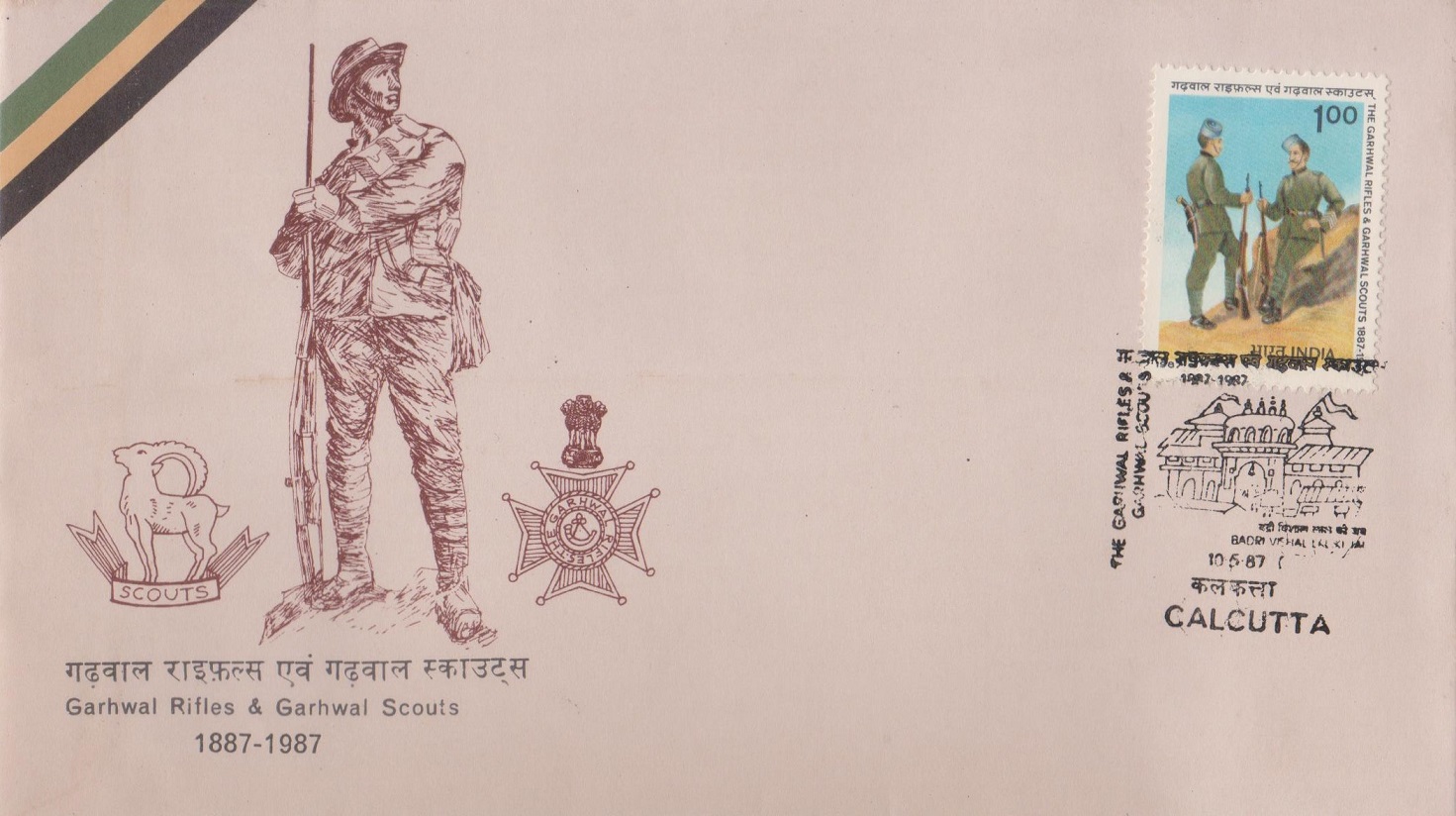
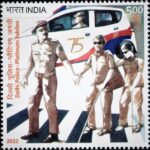
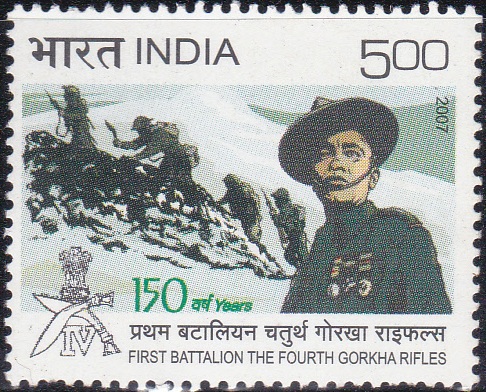
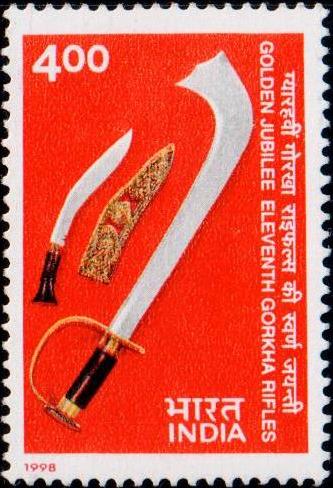

[…] Tengavalley Complex for Army, 250 beds Army hospital in Ladakh and complex for Manipur Police and Assam Rifles. Indo Bhutan micro-wave link, prestigious India house complex and airfield at Paro in Bhutan have […]
[…] kept him there to wait for the Maharaja‘s reply. Meanwhile, a detachment of the 4th Assam Rifles cleared the demonstrators, and in the process some women received bayonet injuries and many were […]